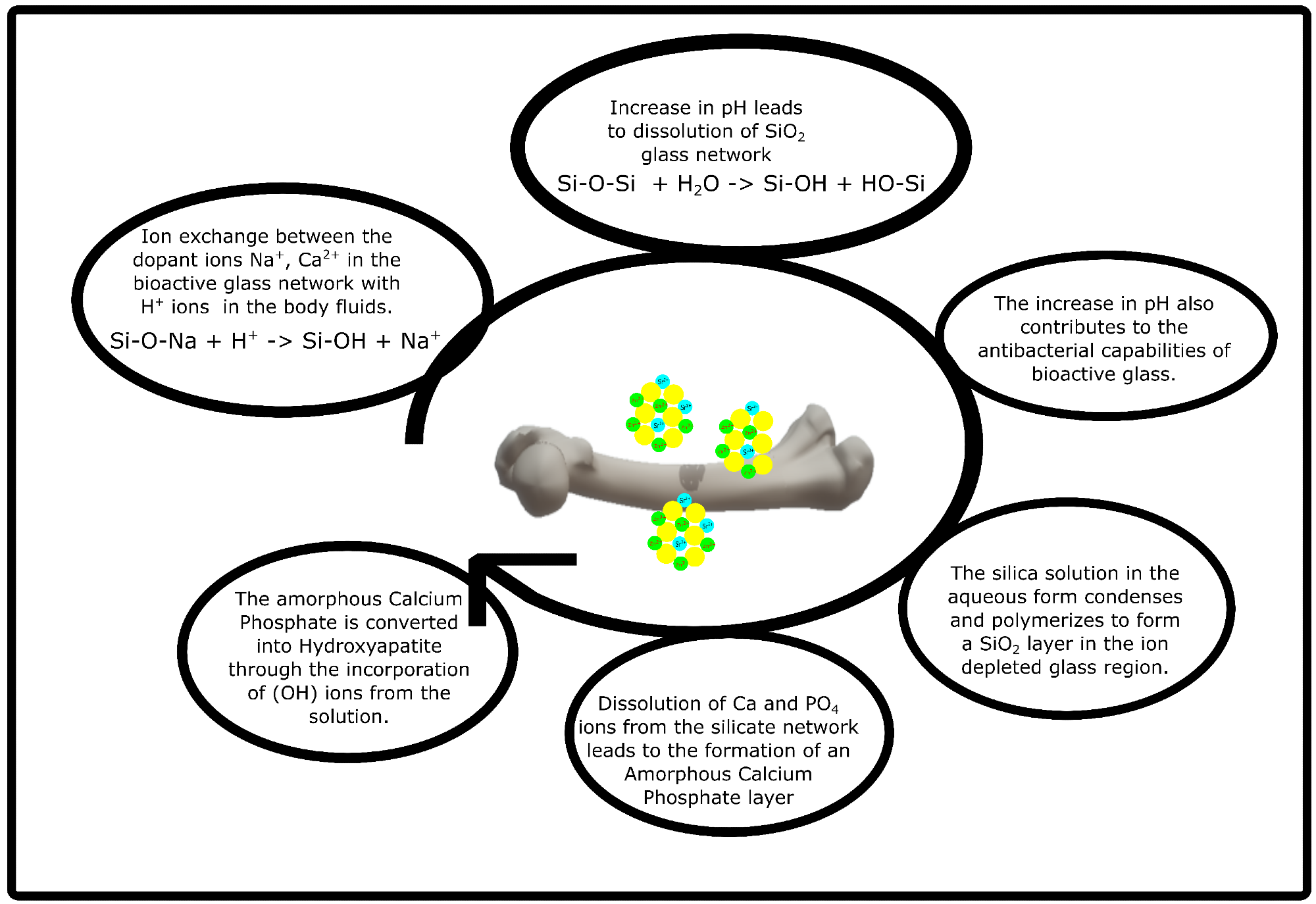Writing in the journal Polymers, a team of researchers from India’s Vellore Institute of Technology and Yeungnam University in Korea has reviewed current advances in 3D-printed bioactive glasses for use in bone tissue engineering. The authors have investigated and highlighted several important research areas.

Study: Can 3D-Printed Bioactive Glasses Be the Future of Bone Tissue Engineering? Image Credit: KittyVector/Shutterstock.com
Repairing Damage to Bones
Repairing bone tissue is a common medical procedure, with bone transplants second only to blood transfusion. Bone tissue can become damaged by accidents, trauma, congenital conditions, aging, and infections. In many cases, the body’s immune system will repair bone damage without the need for surgical intervention, but external intervention is sometimes required.
Bone grafts are used to repair major damage to bones, with allografts, autografts, and xenografts all used in surgeries. However, these procedures can be challenging, with the risk of inflammation, disease transmission, rejection if allografts are used, and the lack of donor sites in the patient’s body for harvesting tissue for autografts. There is a pressing need for safe and efficacious tissue repair strategies.

Schematic of the apatite formation mechanism in bioactive glass scaffolds. Image Credit: Dukle, A et al., Polymers
Regenerating Bone Tissue
3D tissue engineering has become a key biomedical technology in the 21st century. This technology uses artificial materials as scaffolds to substitute natural bone tissue in grafts, thus overcoming issues with compatibility, rejection, and the availability of materials. The scaffold is implanted at the defect site and provides an artificial extracellular matrix for the attachment and proliferation of osteoblast cells.
Materials used as tissue engineering scaffolds must be biocompatible, non-toxic, biomimetic, bio-functional, and biodegradable. In recent decades, many varied materials have been explored for use in bone regeneration using tissue engineering. Second-generation bioactive materials have been developed which actively interact with organic tissues, deliver growth factors and drugs, and accelerate the healing process.
The Study
The study in the journal Polymers has reviewed the current progress in bioactive glass, a promising but little-explored tissue engineering material. Bioactive glass forms strong bonds with bone tissue due to the formation of hydroxyapatite-like layers. Hydroxyapatite has been widely explored by researchers for regrowing bone material due to its mechanical properties and osteoconductive behavior.
The surface area of bioactive glass is highly reactive, with protein absorption enhanced by the presence of the apatite layer in the material. Increased ion generation promotes osteoconductivity, enhancing the biocompatibility of bioactive glass. 3D printing methods offer the possibility of fabricating customized, highly accurate bioactive glass scaffolds during surgery.
In the review study, the viability of polymer-bioactive glass composites regenerating bone tissue is explored. A brief overview of the materials and their mechanisms within tissue environments is given by the authors. Additionally, the major 3D printing technologies that have been explored for this application are highlighted, and a critical perspective on the use of different composites is provided.

Schematic of the sol–gel synthesis of bioactive glass nanoparticles (image adapted from CC BY-SA 3.0). Image Credit: Dukle, A et al., Polymers
Some Points Raised in the Study
The authors have stated that understanding the process of bone tissue regeneration and repair is central to designing fabrication processes and scaffold materials. Bioactive glass has already been FDA approved, with numerous advances since its invention, such as borosilicate, phosphate, and borate glass. Advances in sol-gel chemistry have facilitated the development of bioactive glasses.
Several methods have been developed in recent years to produce composite scaffolds of polymers and bioactive glass. These methods include polymer foam replication and thermal bonding. Surgeons prefer foams as they can be easily cut during medical procedures. Using 3D printing in conjunction with these processes facilitates the development of scaffolds with good mechanical properties.
3D printing is the most suitable method due to its ability to create highly customized scaffolds with enhanced mechanical properties. Amongst 3D printing processes, extrusion-based methods are preferred by tissue engineers.
Advances in technologies such as CAD and CT scans enhance the ability to design custom scaffolds that are tailored for the patient. Scaling processes to industrial levels facilitates the central production of bioactive glass composites and transportation to the point of care locations, where the CAD model can be used to print the scaffold. After sterilization, scaffolds can be grafted.
Synthetic polymers used in composites include thermoplastic polymers such as PLA, thermosets such as PPF, and natural polymers such as chitosan, alginate, and silk fibroin. Natural protein and polysaccharide polymers have been widely investigated. Synthetic polymers have superior mechanical properties, whereas natural polymers have good biodegradability and biocompatibility. Polymers must be selected based on application or bone region.
In Summary
The review has provided a significant contribution to current research. Composite bioactive, biocompatible, and biodegradable polymer-glass composites with enhanced mechanical properties could be a potential target for scientists working in the field of tissue engineering. Targeted delivery of drugs and therapeutics using these scaffold materials could be a future research direction.
Further Reading
Dukle, A et al. (2022) Can 3D-Printed Bioactive Glasses Be the Future of Bone Tissue Engineering? Polymers 14(8) 1627 | mdpi.com. Available at: https://www.mdpi.com/2073-4360/14/8/1627
Disclaimer: The views expressed here are those of the author expressed in their private capacity and do not necessarily represent the views of AZoM.com Limited T/A AZoNetwork the owner and operator of this website. This disclaimer forms part of the Terms and conditions of use of this website.